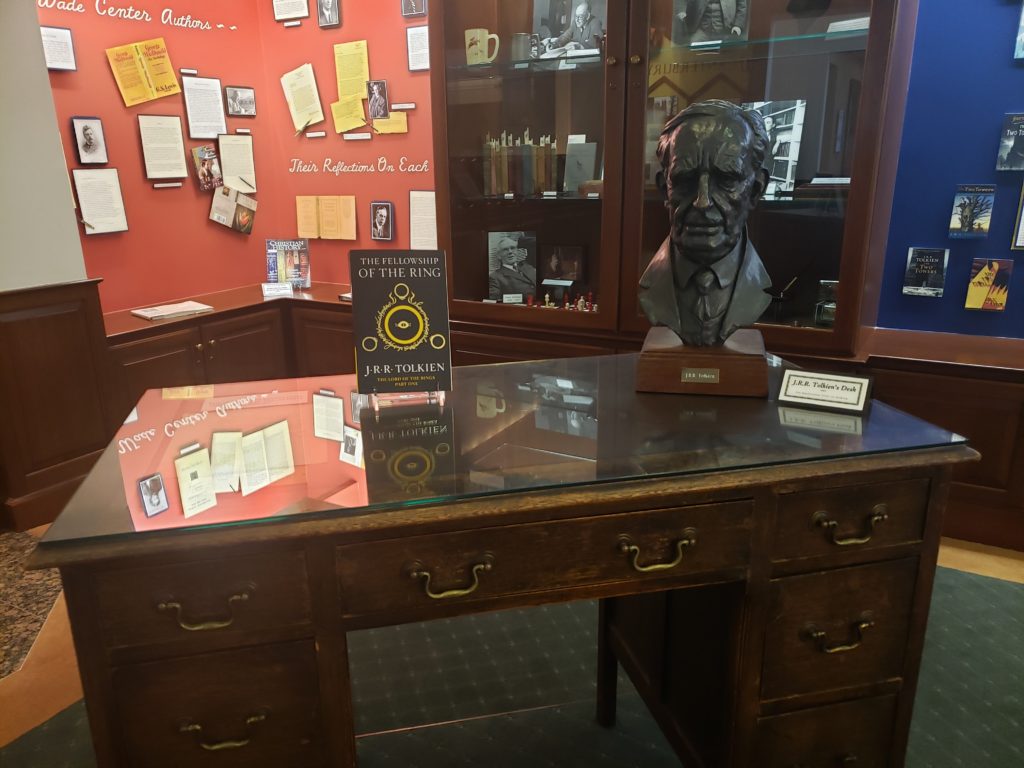I returned from the Marion E. Wade Center at Wheaton College about a week ago. I was there for two reasons: to hear a lecture from historian Mark Noll regarding C. S. Lewis’s connections with Americans (many of you know I wrote a book on that topic); to delve into more research for a hoped-for future book that will examine Lewis’s understanding of history–its significance, its limitations, and how Christians should incorporate it into their comprehension of God’s redemption plan.
There are at least three themes that I and a colleague are developing for this proposed book. I’m borrowing heavily here from what my colleague wrote about our quest.
1) Lewis seems to put a major emphasis on the need for students to cultivate a historical imagination–to encounter the past through the eyes of the men and women who lived it. It doesn’t seem like Lewis just wants students to imagine what it was like to be an Ancient Greek man so they can understand a play by Euripides better, but that seeing the world through pre-modern eyes is a way of setting us free from the various fallacies and pitfalls of our current moment.
2) Lewis seems to have a lot to say about chronology. He is concerned with the demarcation of the Middle Ages and the Renaissance and with the tracking of “movements” such as humanism and Puritanism. He also says a lot about giving renewed attention to other great transitions in history including the “Pre-Christian Age,” the “Christian Age,” the “Post-Christian Age,” and the “Age of the Machines.”
3) Lewis sets his ire against historicism more than any other trend in historiography. It seems that Lewis thought that this trend was not only a poor way to study history, but socially and spiritually destructive in some way. Historicism is not just a sin of the modern era, but is something common in the work of Christian historians in the Middle Ages as well.
We’ve already conducted a preliminary review of most of Lewis’s published writings, both books and essays. My goal at the Wade was to investigate books from Lewis’s personal library to see how he annotated them and what he found worthy of underlining in those books. There were special precautions that had to be taken when handling Lewis’s books.
As you can see, I had to place each book on this pillow. Further, there was this mini-bean bag that had to be laid on the pages if I needed to hold the book open. And I was grateful for the magnifying glass to help decipher some of Lewis’s tiny annotations.
Critical thinking is necessary when deciding what is worth noting in these annotations and underlinings. Was Lewis merely summarizing in his annotations or was he contributing his personal thoughts? When he underlined something, is that an indication of agreement or not? After all, Lewis loved a good argument, and sometimes he might have drawn attention to ideas with which he disagreed. Do I see any connections with what he underlined with what he later wrote? Did he draw on some of these authors for his thoughts? I actually love this type of historical detective work.
While at the Wade, I noticed something new. For all Tolkien fans, there is now a new Tolkien bust sitting on his desk.
When perusing the book shelves, I noticed something else:
If you look carefully, you will see three blue books inserted between the biography of Joy Lewis and the Lewis Readers’ Encyclopedia. That one is called America Discovers C. S. Lewis: His Profound Impact. Yes, I recommend it.
My research into Lewis’s library is not yet finished. I will be returning next month. The Wade’s reading room ranks near the top of my favorite places.





